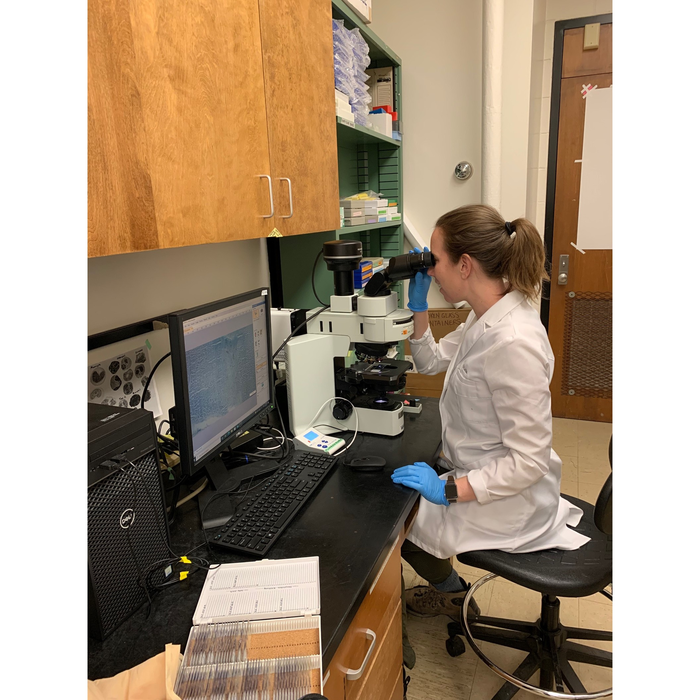Humans are undoubtedly altering the natural environment. But how wild animals respond to these changes is complex and unclear. In a new study published today, scientists have discovered significant differences in how the brain works in two distinct personality types: those who act fearless and those who seem afraid of new things. Being fearless can help wildlife, specifically birds, find new food sources, explore new nesting areas and help them adapt to changes in their environment; but being afraid can also help protect them from dangerous novel things in their environment such as cars.

Credit: LSU
Humans are undoubtedly altering the natural environment. But how wild animals respond to these changes is complex and unclear. In a new study published today, scientists have discovered significant differences in how the brain works in two distinct personality types: those who act fearless and those who seem afraid of new things. Being fearless can help wildlife, specifically birds, find new food sources, explore new nesting areas and help them adapt to changes in their environment; but being afraid can also help protect them from dangerous novel things in their environment such as cars.
“Our study provides interesting and important evidence that some of the behavior differences could be led by gene expression,” said LSU Department of Biological Sciences Assistant Professor Christine Lattin, who is the lead author on the paper published by PLOS ONE today.
Social creatures, such as house sparrows, can learn from each other, so having a mixture of both personality types in a flock could be part of the reason this species is so successful in human-altered environments. Scientists have found that within the flock, the genes expressed, or “turned on,” in the brains of the fearless birds are markedly different from those in the birds that exhibit fear. In fact, three out of the four regions of the brain studied showed differences. The hippocampus, which is associated with learning, memory and spatial navigation, contrasted the most amongst the two personality types.
“One of the interesting things about the hippocampus is it can play an important role in decision-making. For example, when wildlife are presented with something new in their environment, the genes in their brains respond, helping them process the information, compare it to past experience and decide whether they should approach or avoid the novel object,” Lattin said.
The scientists compared six wild, invasive female house sparrows: three of which acted fearless and three that seemed afraid to approach a new object at their feeding dish. The novel objects were a red wrist coil keychain wrapped around the food dish, a white plastic cover over part of the food dish, a green plastic Easter egg placed on top of the food in the middle of the dish, a normal silver food dish painted red on the outside and a blinking light hung above and directed towards the front of the dish. The fearless birds fed at the food dish regardless of the presence of the novel objects while the fearful birds avoided the food dish in the presence of the novel objects.
Several weeks after behavior testing, the scientists examined gene expression in four brain regions in these sparrows. The genes that were expressed in the hippocampus of the fearless birds were different from the genes expressed in the hippocampus of the fearful birds. For example, there were many more dopamine receptor 2 transcripts present in the fearless birds. Dopamine receptor 2 has been associated with boldness and exploration. In contrast, the birds that avoided the new objects had more transcripts for the estrogen receptor beta gene, which has been associated with anxiety.
“The fear of new things, or neophobia, is a problem some people struggle with. The neurobiological gene receptors we’ve identified could help other scientists develop drugs to target neophobia or anxiety even in our own species,” Lattin said.
Advances in sequencing technology have made it possible to study neurological gene expression in more wild species.
“It used to be very expensive, but technology has made it faster and cheaper to do these types of analyses. Now that it has become more accessible, more scientists are doing this type of research,” Lattin said.
Journal
PLoS ONE
DOI
10.1371/journal.pone.0267180
Method of Research
Experimental study
Subject of Research
Animals
Article Title
Constitutive gene expression differs in three brain regions important for cognition in neophobic and non-neophobic house sparrows
Article Publication Date
10-May-2022




